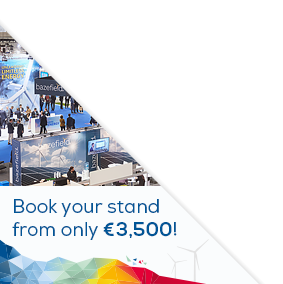Posters
Siblings:
ProceedingsProgrammeProceedingsSpeakersPostersContent PartnersElectrification StageMarkets TheatreR&I ActivitiesStudent DayProgramme Committee & abstracts reviewersPresenters dashboardCome meet the poster presenters to ask them questions and discuss their work
We would like to invite you to come and see the posters at our upcoming conference. The posters will showcase a diverse range of research topics and provide an opportunity for delegates to engage with the authors and learn more about their work. Whether you are a seasoned researcher or simply curious about the latest developments in your field, we believe that the posters will offer something of interest to everyone. So please, join us at the conference and take advantage of this opportunity to learn and engage with your peers in the academic community. We look forward to seeing you there!

PO143: Cost-efficient nacelle-based LiDAR
Thole Horstmann, Scientific Assistant, Fraunhofer Institute for Wind Energy Systems (IWES)
Abstract
Turbulence and fluctuating inflow lead to increased fatigue loads on rotor blades and the drive train of a wind energy converter (WEC). The energy yield is also not optimal. Predictive control allows mitigating these effects by pitching the blades before a gust reaches the rotor plane. Modification of the generator torque control would enable the storage of the additional energy of a gust as rotational energy of the rotor. Both concepts require a wind measurement in front of the WEC - not only when the gust has already reached the rotor. Measuring the incoming wind speed and fluctuation at about 100 m in front of the rotor delivers the time to adapt the pitch angle and generator torque to the foreseen new wind conditions. Additionally, wind farm operators ask for a simple method to verify the WECs power curve. However, conventional LiDARs are quite complex and therefore too expensive to be installed on each WEC. Advanced functions like scanning the whole wind field are not necessary for the above-sketched purposes. There is only one measurement point needed to achieve the line-of-sight wind speed in front of the WEC. And due to the frequent yawing of the WEC into the wind, the wind speed vector is assumed to be aligned to the yawing angle of the WEC. These boundary conditions allow the development of a cost-effective LiDAR module with an innovative laser control and an open-source hardware set-up.







